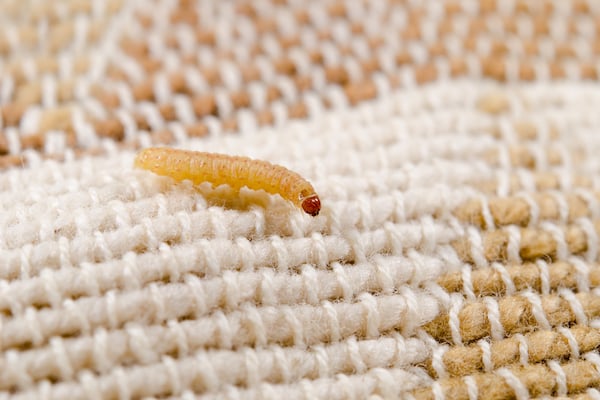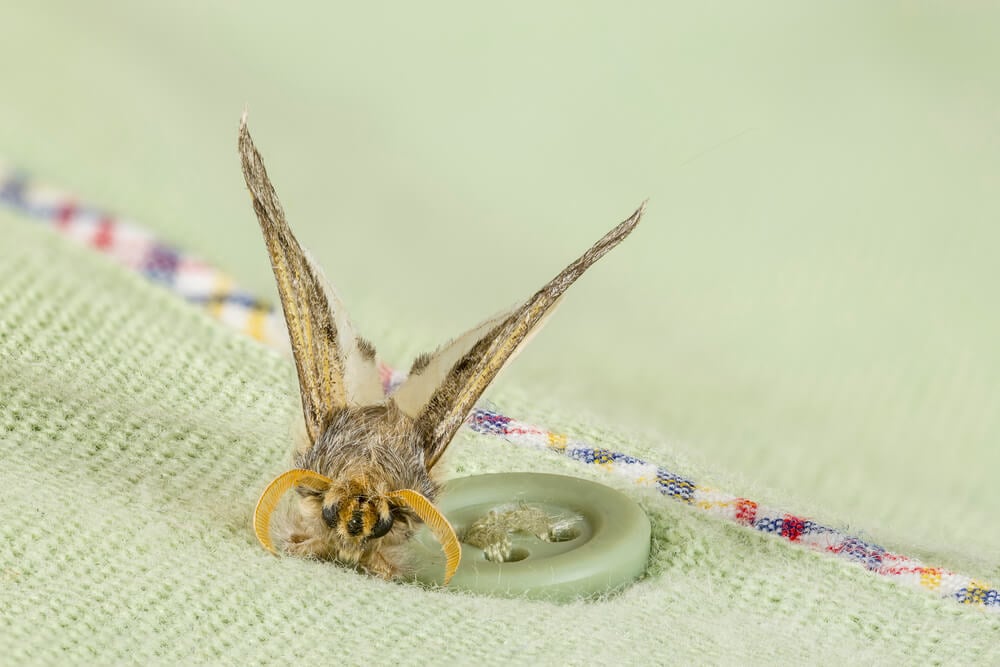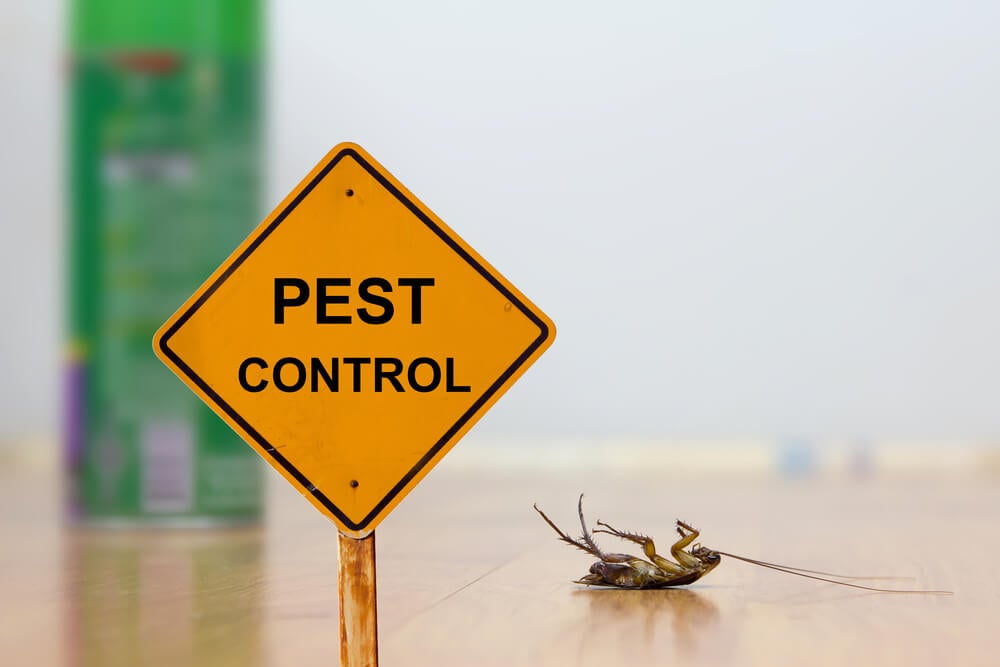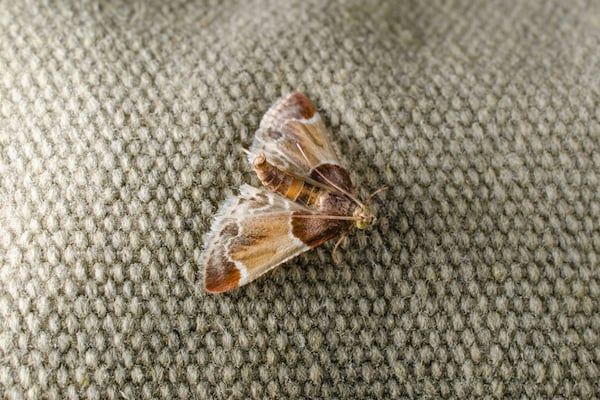
What Are Moths?
Moths are a group of insects comprising over 160,000 species. Both moths and butterflies belong to the Lepidoptera family. Like butterflies, moths begin life as larvae, or caterpillars and develop into moths within cocoons. The common clothes moth, Tineola bisselliella, differs from many types of moth in that it prefers darkness and actually flees from light. Adult clothes moths seek out clothing to lay eggs in, so that when their larvae hatch, food is readily available. Adults lay 40-50 eggs on average over the course of two weeks, and die when egg laying is complete.
What Attracts Moths?
Clothes moths dislike light and fly poorly, so they like dark areas with places they can hide. Adults and larvae need to drink moisture to survive. Clothes moths that infest homes subsist on moisture from sweat and dirt left behind on the clothing they inhabit. Moths seek out dirty clothes primarily, but they’ll infest clean clothing too, if given the opportunity. Many moth species use fruit trees to hibernate over the winter. Moths may be initially attracted to a home by common neighborhood apple, cherry, or crab apple trees. Loose grains, flours, and cereals also attract moths. Pantry moths differ from clothing moths in many ways, but they’re both common household pests.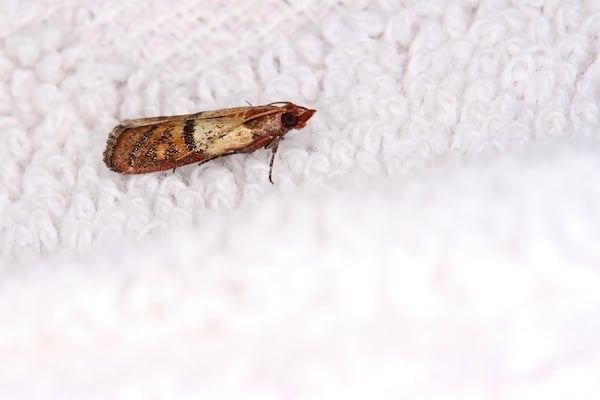
How Do Moths Get In?
A lot of moth infestations occur when larval moth eggs are inadvertently transported into a home. Larval moth eggs are extremely small, and cling to pet hair. Often, dogs will bring them in on their fur after playing or walking outside. Eggs, caterpillars, and even adult moths can also cling onto clothing, grocery bags, boxes, or furniture while they’re outside. Then, when you take those items in, you bring the moths in along with them.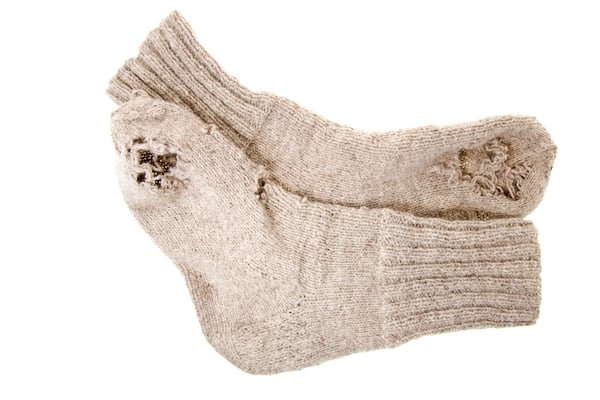
Why Do Moths Eat Clothing?
Contrary to popular belief, adult clothing moths do not eat clothing. It’s actually moth larvae that eat clothing--or rather the fibers in clothing--to grow. Most clothing contains organic fibers made from animal bi-products. Virtually all fibers derived from animals contain keratin, which is a structural protein. Moth larvae need to process a lot of keratin to grow and create the material they use to spin their cocoons. Silk, wool, cashmere, angora, fur, linen, hair, lint, carpet, feathers, and most dust contains keratin, so it’s fair game for larvae. Clothing happens to satisfy moths’ need for darkness, moisture, and shelter, too, which is why it’s a favorite.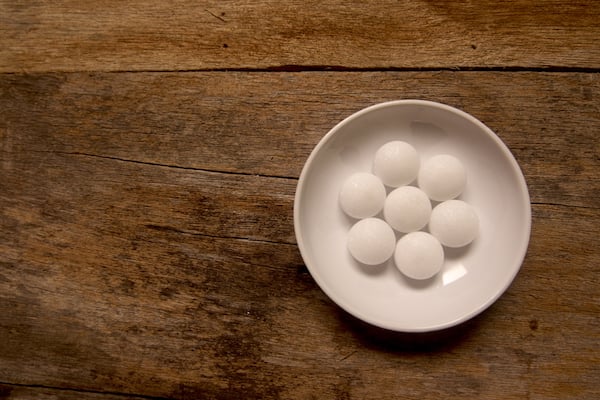
How Do Mothballs Work?
Mothballs are small wafers of pesticide packed into a compressed, solid form. Mothballs formerly used a chemical called napthalene, but most modern mothballs use 1,4-dichlorobenzene because it’s somewhat less flammable. Both napthalene and 1,4-dichlorobenzene are toxic to moths in gaseous form. When placed in an air-tight, confined space, mothballs gradually evaporate from solid into gas, poisoning and killing moths in that space.Concerns
Both napthalene and 1,4-dichlorobenzene are hazardous to inhale. Each of the gases are considered carcinogens. Prolonged exposure may result in myriad health problems including nausea, fatigue, headaches, and jaundice. Mothball inhalation is particularly dangerous to children. The National Fire Protection Association assigned Napthalene and 1,4-dichlorobenzene level 2 flammability, which means they can ignite easily. When Napthalene and 1,4-dichlorobenzene gases combine, they produce a chemical that can damage clothing, so napthalene and 1,4-dichlorobenzene mothballs should never be used together.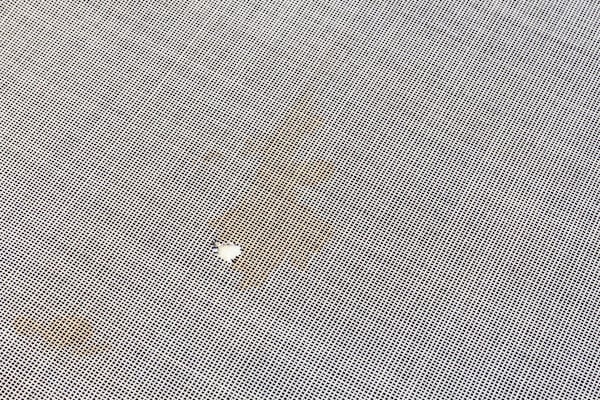
How Can I Tell If I Have Moths?
Look for small, irregular holes in organic clothing, especially near the bottom or inside. Synthetic clothing will lack these holes but may be ripped from the inside. Adults moths sometimes stain clothing they lay eggs or mate on, as well, so look for small stains on the inside of hung clothing. It’s difficult to spot larval eggs, but you can look for silk tubes or cases left behind by cocooning moth larvae, or strings of fiber dangling off of shirts. Outside the closet, look for small holes in food boxes and bags, and/or waste and bite marks on cereal or grains.